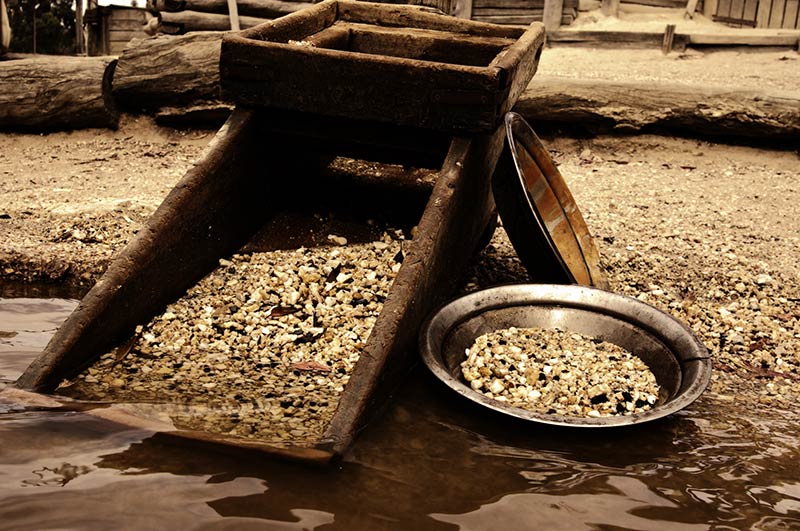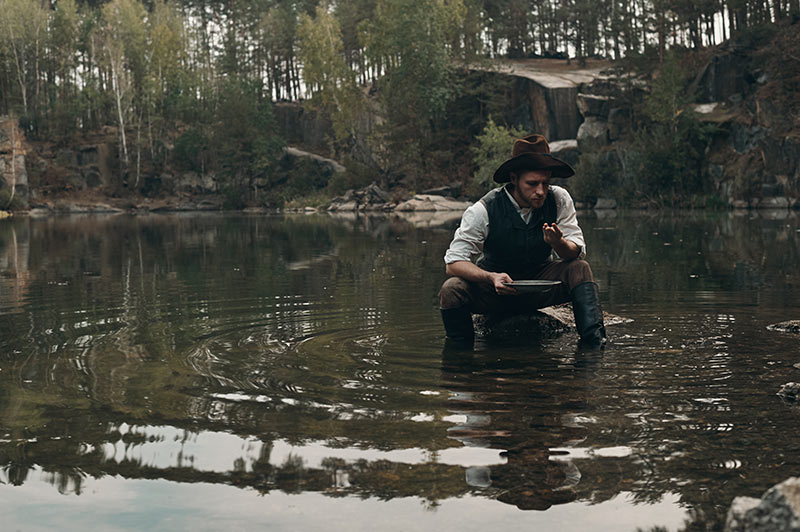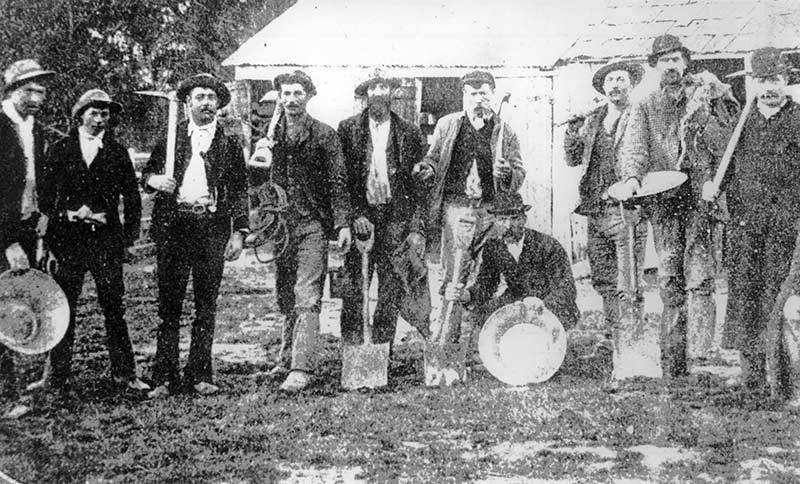Introduction to Gold Prospecting
Gold prospecting is the process of searching for precious gold deposits in the earth with the intention of extracting it. It is a popular outdoor activity that has been practiced for centuries and continues to attract enthusiasts from all over the world. The thrill of discovering gold is what makes it such a compelling hobby for many people.
The importance of gold prospecting cannot be overstated. Gold has been a valuable commodity since ancient times and remains so today. It is widely used in jewelry, electronics, and currency, making it a highly sought after resource. Gold prospecting offers an opportunity for people to not only enjoy the great outdoors but also to potentially strike it rich.
In this article, we will provide an overview of gold prospecting and cover all the essential information you need to get started. From selecting the right prospecting supplies to finding the best gold-rich areas and using advanced techniques, we will guide you through the process of. So, whether you are a seasoned pro or a beginner, this article is for you.
Prospecting Supplies and Tools Needed
Before starting your gold prospecting adventure, it is important to have the right equipment and tools. Here are the essentials you need to get started:
Gold Panning Kit
A basic panning kit is the foundation of any gold prospecting setup. It typically includes a gold pan, a classifier (a device used to sift out larger rocks and debris), and a sluice box (a channel used to separate gold from dirt and gravel). Minelab makes a good quality PRO-GOLD gold panning kit that will get you started,
Sluice Box
A sluice box is a long, narrow channel that is used to separate gold from dirt and gravel. It is an essential tool for gold prospecting, especially in areas with a fast-moving water flow. If you are just getting started, grab yourself a folding backpack sluice box. They are easy to transport and a great first sluice box.
Gold Detectors
A metal detector is a device used to locate metal objects, including gold, underground. It is an important tool for gold prospecting, especially in dry regions where gold is often found in buried deposits. Minelab makes some of the top gold detectors on the market. A popular model is the Minelab Gold Monster 1000 gold detector.
Other Essential Prospecting Tools
Other tools you may need for gold prospecting include a prospecting pick, shovel, and bucket for digging and moving dirt and gravel, a hand pump for draining water from your sluice box, and a black sand magnet to remove magnetic minerals from your gold concentrate.
Tips for Selecting the Right Equipment
When choosing your gold prospecting supplies, consider factors such as the type of terrain you will be prospecting in, the size of the area you plan to cover, and your budget. It is also important to choose equipment that is lightweight and portable, so you can easily take it with you wherever you go.

Where is Gold Found
One of the most important aspects of gold prospecting is knowing where to look for gold. Here are some tips to help you find the best gold-rich areas:
Public Land vs Private Land
When it comes to gold prospecting, you have the option of prospecting on public land or private land. Public land, such as national forests and Bureau of Land Management lands, is open to gold prospecting. However, it is important to check with the local government for regulations and restrictions. On the other hand, private land requires permission from the landowner before you can prospect on it.
Researching Gold-rich Areas
Research is key when it comes to finding gold-rich areas. Look for areas that have a history of gold mining, and consult maps and geologic reports for information on gold deposits. Join gold prospecting clubs or events to meet other prospectors and learn about their experiences and successes. Get started with research and increase your chances of finding gold!
Identifying Gold-bearing Streams and Rivers
To find gold-bearing streams and rivers, look for signs of previous mining, study the geology, assess water flow, and test the stream bed. Fast-moving water over rocks and minerals like quartz and iron pyrite can increase chances of finding gold deposits. Panning or using a gold sniffer bottle can give an idea of the type and amount of gold present.
Gold Prospecting in Dry Regions
Dry regions can still hold valuable gold deposits, so don’t rule them out when looking for gold. To increase your chances of success, consider researching the geology of the area, looking for natural indicators of gold deposits, testing the area through panning or metal detecting, and seeking out abandoned mines.
Abandoned mines can be rich in information about the type of minerals that were extracted and the type of deposits that were found. By combining these tactics, you can increase your chances of finding gold in dry regions and having a successful gold-prospecting experience.
Tips for Finding the Best Gold Prospecting Sites
Gold-prospecting sites are not always easy to find, but with a little research and effort, you can increase your chances of success. One of the best ways to find good gold-prospecting sites is by researching the history of mining in the area. Look for information on the type of minerals that were extracted and the type of deposits that were found. Additionally, study the geology of the area and look for areas with high levels of mineralization, such as quartz veins or alluvial deposits.
Another key factor to consider is water flow. Gold can be found in areas with fast-moving water over rocks and minerals, so look for streams and rivers that are likely to have high levels of mineralization. You can also assess the water flow by looking for natural gold traps, such as eddies and pools, where gold can be deposited and concentrated.
Finally, don’t be afraid to test the area. Panning for gold or using a metal detector can give you a good idea of the type and amount of gold that is present. This can help you determine if a site is worth exploring further and if it has the potential to be a good gold-prospecting site.
The Process of Panning for Gold
Panning for gold is one of the simplest and most popular methods of gold prospecting. It involves using a gold pan and water to separate gold from dirt and gravel. Here is a step-by-step guide on how to pan for gold with a good Gold Panning Kit:
Gather Your Gold Prospecting Supplies
Before you start panning for gold, make sure you have all the necessary equipment, including a gold pan, classifier set, and sluice box if you plan on doing more than panning.
Select a Good Panning Spot
When panning for gold, it’s important to choose the right spot to maximize your chances of success. Factors to consider when selecting a good panning spot include the water flow, the geology of the area, and the presence of any natural gold traps. Fast-moving water over rocks and minerals, such as quartz and iron pyrite, can increase the chances of finding gold deposits.
Pay attention to the geology of the area and look for areas with high levels of mineralization that can indicate the presence of gold. Additionally, look for natural gold traps, such as eddies and pools, where gold can be deposited and concentrated. With these factors in mind, you can select a good panning spot and increase your chances of finding gold.
Fill Your Pan with Gravel and Sand
Fill your gold pan with dirt and gravel from the stream or river. Make sure to use a classifier to remove larger rocks and debris before panning.
Add Water
Add water to your gold pan and use your hands to swirl the dirt and gravel around. This will help separate the gold from the dirt and gravel.
Use Your Pan to Sift Out the Gold
As you swirl the dirt and gravel around, the heavier gold will settle to the bottom of the pan. Use your pan to sift out the larger rocks and debris, leaving the lighter dirt and gravel behind.
Repeat the Process
Repeat the process of swirling and sifting until you have removed all the dirt and gravel from your pan and are left with just the gold.
Use a Sluice Box
Once you have panned for gold, you can use a sluice box to separate the gold from the rest of the concentrate. Simply place your gold concentrate in the sluice box and add water. The water will carry the dirt and gravel away, leaving the gold behind.
By following these simple steps, you can start panning for gold and enjoy the thrill of discovering this precious metal.
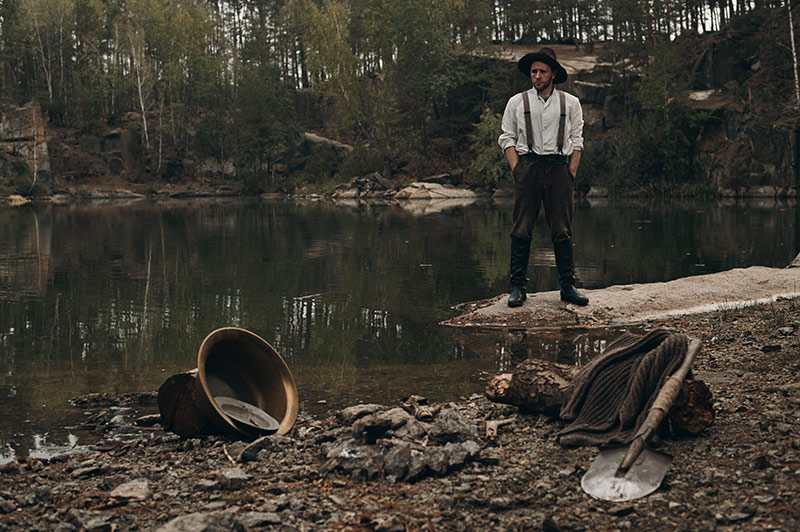
Advanced Gold Prospecting Techniques
While panning is a great way to get started with gold prospecting, there are several more advanced techniques you can use to increase your chances of finding gold. Here are a few of these techniques:
Gold Detecting
Gold metal detecting is a popular and effective method for finding gold. This technique involves using a gold detector to scan the ground for metallic objects, including gold nuggets, coins, and jewelry. The key to success with metal detecting is to choose the right equipment, understand how it works, and be patient.
When choosing a metal detector, consider your experience level, the type of gold you are looking for, and the type of terrain you will be working in. There are many different models available, each with its own strengths and weaknesses, so take your time to research and select the one that best suits your needs.
Next, it’s important to understand how your metal detector works. This includes understanding the different settings and how they affect the results, as well as learning how to identify signals and distinguish between valuable targets and junk.
Finally, be patient. Gold-prospecting with a metal detector can be a slow and tedious process, but it can also be very rewarding. Take your time, scan the area thoroughly, and be prepared to dig for your targets. With patience and persistence, you can increase your chances of success with metal detecting.
Dredging
Dredging is another advanced gold-prospecting technique that involves using a machine to suck up material from the bottom of streams and rivers. The material is then processed to extract any gold that is present. This method is typically used in areas with fast-moving water and large amounts of sediment, where traditional panning and metal detecting are not as effective.
Dredging requires specialized equipment, such as a dredge, a sluice box, and a high-volume water pump. It is also a more physically demanding and potentially dangerous technique, so it is important to be fully prepared and properly trained before attempting it.
When selecting a dredging site, look for areas with high water flow and a large amount of sediment. Pay attention to the geology of the area and look for areas with high levels of mineralization that can indicate the presence of gold. It’s also important to be aware of any regulations and permits that may be required for dredging in your area.
Dredging can be a highly effective method for finding gold, but it is also more complex and requires a greater investment in time and equipment. If you are new to gold prospecting, it is recommended that you start with simpler techniques, such as panning and metal detecting, before attempting dredging. However, if you are experienced and prepared, dredging can be a valuable tool for finding gold and increasing your chances of success.
Highbanking
Highbanking is a gold-prospecting technique that involves using a highbanker, which is a standing sluice box with a hopper that separates gold from other materials. This technique is typically used in areas with limited water flow or in areas where traditional panning and metal detecting are not as effective.
The process of highbanking involves using a pump to bring water to the highbanker, where the material is then shovled into the hopper and processed to extract any gold that is present. This method requires specialized equipment, such as a highbanker, a water pump, and a sluice box.
When selecting a highbanking site, look for areas with a large amount of sediment and mineralization that can indicate the presence of gold. It’s also important to be aware of any regulations and permits that may be required for highbanking in your area.
Highbanking is a relatively simple and efficient method for finding gold, but it does require a certain level of investment in equipment and experience. If you are new to gold prospecting, it is recommended that you start with simpler techniques, such as panning and metal detecting, before attempting highbanking. However, if you are experienced and prepared, highbanking can be a valuable tool for finding gold and increasing your chances of success.
Rockhounding
Rockhounding is a gold-prospecting technique that involves searching for gold-bearing rocks and minerals in the surrounding terrain. This technique is typically used in areas with limited water flow or in areas where traditional panning and metal detecting are not as effective.
The process of rockhounding involves searching for rocks and minerals that are known to contain gold, such as quartz or sulfide minerals. Once you have found these rocks, you can then crush and process them to extract any gold that is present. This method requires specialized equipment, such as a rock crusher, a sluice box, and a pan.
When searching for gold-bearing rocks, look for areas with a high concentration of mineralization, such as quartz veins or mineral deposits. Pay attention to the geology of the area and look for rocks that are known to contain gold. It’s also important to be aware of any regulations and permits that may be required for rockhounding in your area.
Rockhounding is a relatively simple and straightforward method for finding gold, but it does require a certain level of investment in equipment and experience. If you are new to gold prospecting, it is recommended that you start with simpler techniques, such as panning and metal detecting, before attempting rockhounding. However, if you are experienced and prepared, rockhounding can be a valuable tool for finding gold and increasing your chances of success.
Sniping
Sniping is a gold-prospecting technique that involves searching for gold in hard-to-reach places, such as crevices and cracks in rocks or boulders. This technique is typically used in areas with limited water flow or in areas where traditional panning and metal detecting are not as effective.
The process of sniping involves using a specialized tool, such as a sniping tube, to extract gold from hard-to-reach places. The sniping hand dredge is typically made of plastic or metal and is designed to allow you to reach into crevices and cracks to extract any gold that is present. This method requires a high level of skill and patience, as well as specialized equipment, such as a suction hand dredge, a small brush, and a magnet.
When sniping for gold, look for areas with a large amount of mineralization and gold-bearing rocks, such as quartz veins or mineral deposits. Pay attention to the geology of the area and look for areas with crevices and cracks that may contain gold. It’s also important to be aware of any regulations and permits that may be required for sniping in your area.
Sniping is a challenging and rewarding method for finding gold, but it requires a high level of experience and skill. If you are new to gold prospecting, it is recommended that you start with simpler techniques, such as panning and metal detecting, before attempting sniping. However, if you are experienced and prepared, sniping can be a valuable tool for finding gold in hard-to-reach places and increasing your chances of success.
By incorporating these advanced techniques into your gold prospecting activities, you can greatly increase your chances of finding gold and having a successful gold-prospecting experience.
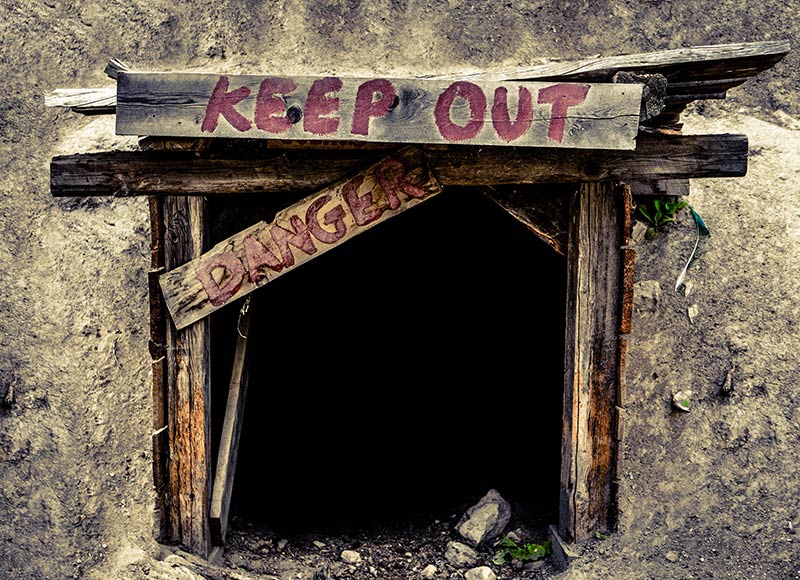
Gold Prospecting Regulations and Permits
Gold prospecting is regulated by the government to ensure that natural resources are conserved and protected. Before starting any gold prospecting activities, it is important to familiarize yourself with the regulations and obtain any necessary permits. Here are a few key points to consider:
Know the Regulations
Each state and country has its own regulations for gold prospecting. It is important to research and understand the regulations in your area, including any restrictions on the type of equipment you can use and the areas where you can prospect. You may be required to stake a claim in order to prospect in certain areas.
Obtain Necessary Gold Prospecting & Mining Permits
Depending on your location, you may need to obtain permits to prospect for gold. For example, you may need to obtain a permit from the Bureau of Land Management (BLM) to prospect on public lands.
Respect Private Property
It is important to respect the rights of private property owners and only prospect on land where you have permission to do so. Trespassing on private property is illegal and can result in fines and other penalties.
Respect the Environment
Gold prospecting can have an impact on the environment, so it is important to follow best practices to minimize this impact. This may include using proper techniques to reduce erosion, filling in holes,avoiding the use of toxic chemicals, and taking steps to protect wildlife and other natural resources.
By following the regulations and obtaining the necessary permits, you can ensure that your gold prospecting activities are safe, legal, and environmentally responsible.
Conclusion
Gold prospecting is a fun and exciting hobby that can lead to the discovery of valuable gold deposits. Whether you’re a beginner or an experienced prospector, there are many techniques and tools you can use to increase your chances of finding gold. From panning to advanced methods like metal detecting and dredging, there are many ways to get started with gold prospecting.
It is important to research and understand the regulations in your area, obtain any necessary permits, respect private property, and take steps to minimize your impact on the environment. With the right equipment, knowledge, and a little bit of luck, you can have a successful and rewarding gold-prospecting experience. So get out there, get started, and happy prospecting!

